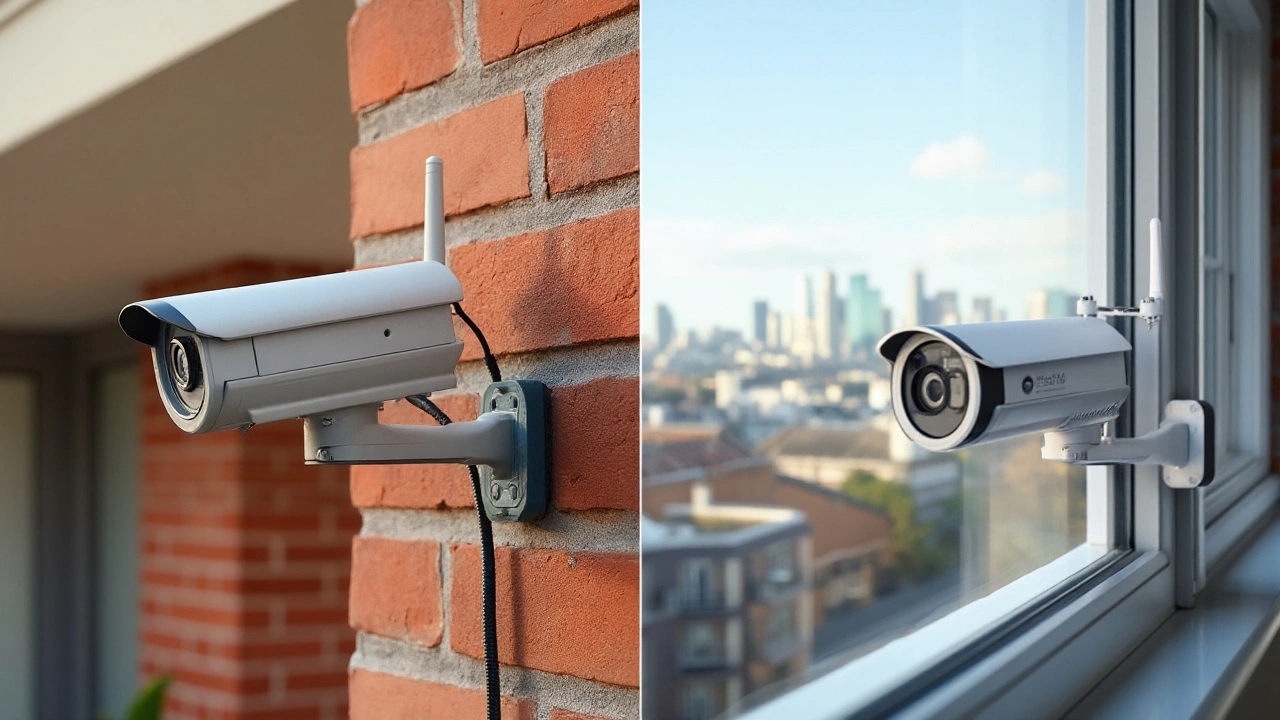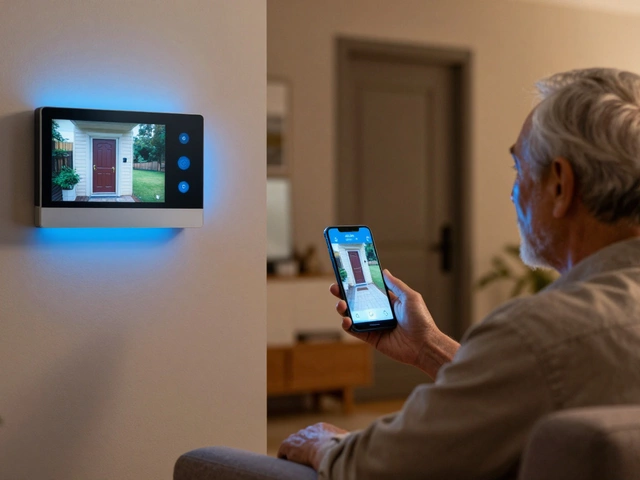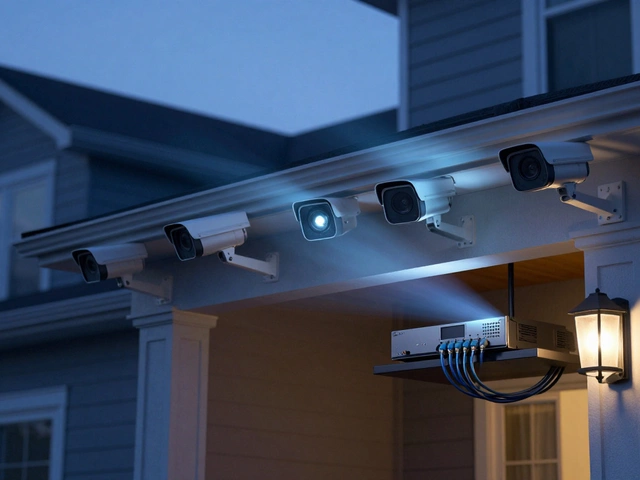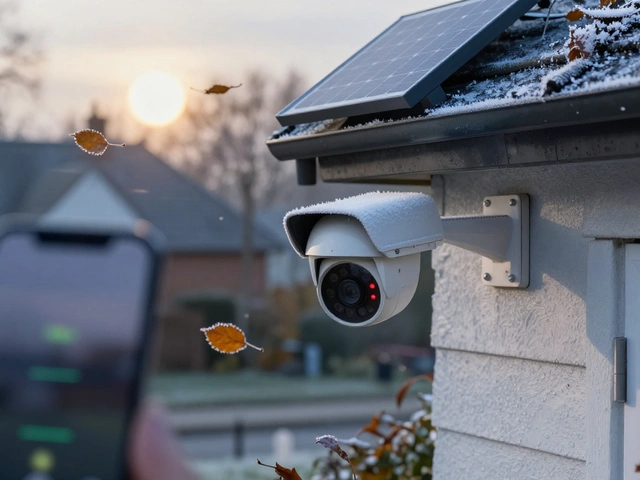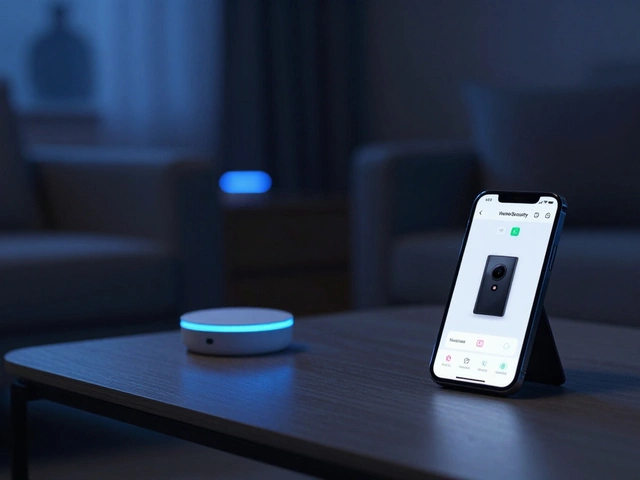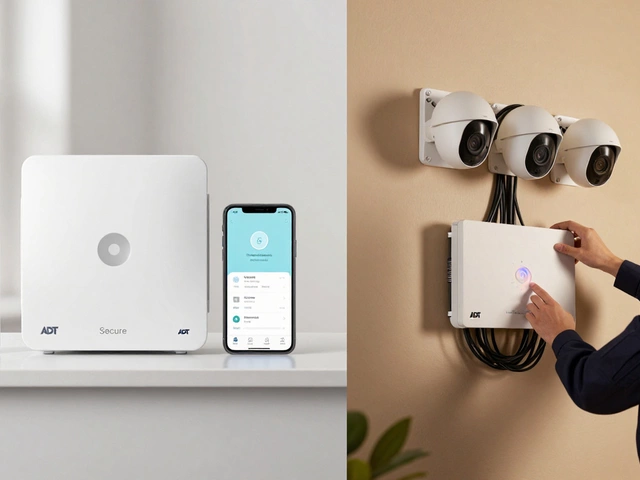As we become increasingly vigilant about safeguarding our homes, security cameras have become more than just a luxury—they're a necessity. However, the choice between wired and wireless security cameras can be puzzling. Each type has its unique benefits and drawbacks, designed to cater to different needs and environments.
Before you decide, it's crucial to consider what fits your specific security needs. Maybe you're looking for a foolproof connection that a wired system delivers, or perhaps the freedom to adjust and relocate cameras effortlessly appeals to you more. Whatever your circumstances are, understanding how each type of camera functions can lead to a smarter decision for safeguarding your home.
- Understanding Wired Security Cameras
- Exploring Wireless Security Cameras
- Pros and Cons of Wired vs Wireless
- Making the Right Choice for Your Situation
Understanding Wired Security Cameras
Wired security cameras, often seen in business and residential security systems, are known for their reliability and stable connection. These types of cameras are physically connected to a recording device, typically through coaxial cables or Ethernet. This kind of setup ensures a continuous power supply and uninterrupted video quality without the risks associated with interference. These cameras are a great choice if you’re looking for a permanent installation with steady performance.
One of the standout features of a wired system is its ability to transmit a higher quality video signal without any notable latency, which can be critical in capturing necessary details in security footage. Since the connection isn't dependent on fluctuating Wi-Fi signals, these cameras will function seamlessly even in environments where network stability might otherwise be an issue. Institutions such as banks and big corporate offices often opt for such reliable systems to ensure thorough surveillance coverage. As the manager of London-based security firm Lock & Safe Ltd. once said,
"For businesses that cannot afford to leave any stone unturned, wired systems are the gold standard."
Installation of wired security cameras can be slightly complex, often requiring professional assistance to ensure proper placement and connection runs. This is particularly true when cabling needs to be concealed within walls or ceilings for an aesthetically pleasing and secure setup. While installation might initially seem cumbersome, the exhaustive network of wires translates to a long-term stability that many homeowners find invaluable. The idea is akin to the uncompromised reliability found in wired internet connections where consistent performance is a priority.
However, as with any technology, wired cameras aren't without their downsides. The limitation of needing to directly link each camera to the recording hub can result in visually cluttered spaces due to the extensive cabling involved. Not to mention, any repositioning requires a labor-intensive effort. Despite this, the steady power supply means you won’t suffer from unexpected shutdowns that could leave your property unprotected. According to a recent survey by MarketWatch, 60% of retail stores still prefer wired security systems for precisely these reasons, relying on their ability to clearly record crucial evidence.
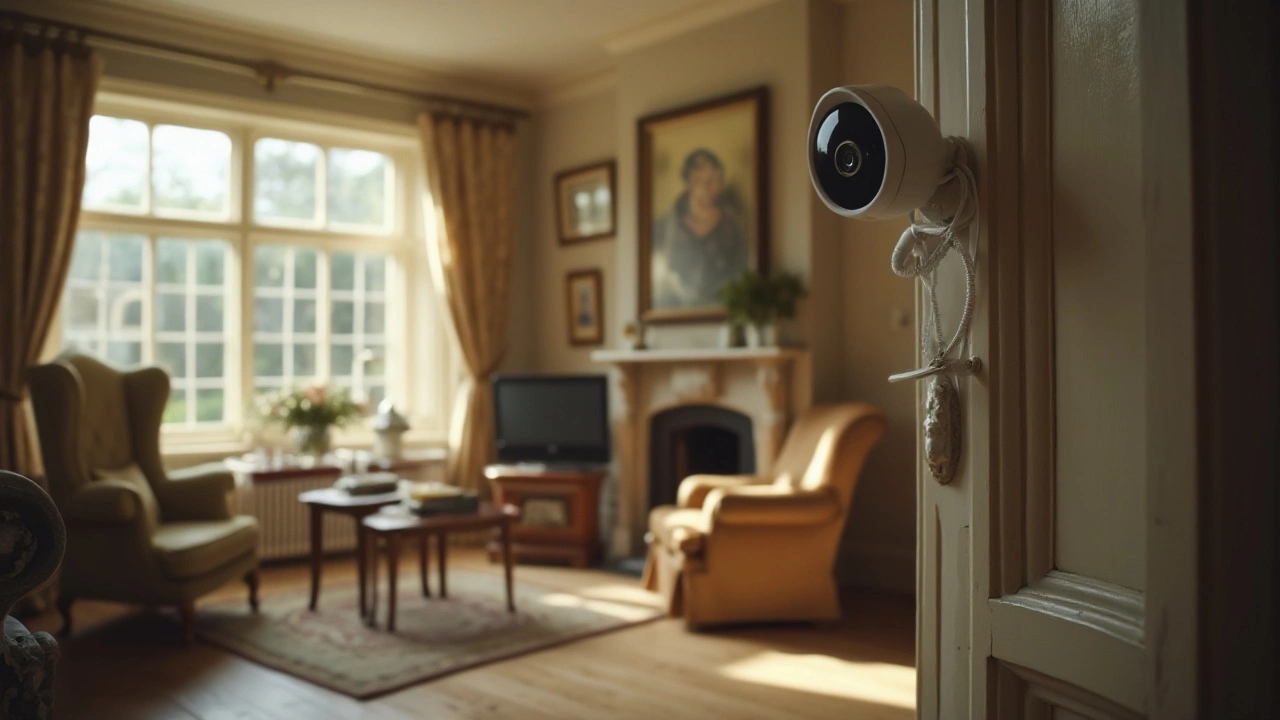
Exploring Wireless Security Cameras
Wireless security cameras have taken the tech world by storm, providing a sense of liberty both in terms of placement and connectivity. These cameras are celebrated for their versatility, allowing users to set up their security systems without drilling holes through walls or running unsightly wires across rooms. The cornerstone advantage is undeniably their wireless connection, which gives you the freedom to place cameras at optimal angles or move them from one location to another with minimal hassle. This makes them an excellent choice for renters who cannot make permanent changes to their homes, or for families planning to relocate. In terms of connectivity, most wireless cameras are now integrated with Wi-Fi, facilitating instant video feeds directly to your smartphone or computer with the help of companion apps.
Modern wireless security cameras bring a degree of smarts to the table that fixed, wired systems can find challenging to match. Features such as motion detection, night vision, and even two-way audio have become standard. In some cases, these cameras come equipped with advanced capabilities like facial recognition or integration with smart home ecosystems such as Alexa or Google Home. For tech-savvy homeowners, the ability to control their home security with voice commands represents a blend of convenience and futuristic appeal. Moreover, the advent of cloud storage in wireless cameras allows users to securely store their footage online, although it's important to note that such services often come at an extra subscription cost.
Admittedly, the wireless realm is not without its pitfalls. One notable concern is their dependency on battery power unless connected to a continuous source, meaning regular charging or battery swaps are necessary to ensure they don’t fail when needed the most. Additionally, having a wireless setup means being at the mercy of your internet connection, a potential vulnerability in areas with spotty Wi-Fi coverage. Privacy concerns are also something to bear in mind, as anything linked to the web could theoretically be at risk of hacking or unauthorized access. Still, industry experts have researched advancements in securing these cameras.
According to a statement from the Consumer Technology Association, "As technology evolves, so too does our commitment to developing more robustly secure and user-friendly devices."It's crucial to weigh these aspects with your needs and areas of application, balancing flexibility against security risks.
Security technology enthusiasts might be interested in current statistics reflecting the rapid adoption of wireless systems. The table below illustrates some figures from the latest home security market surveys:
| Year | Market Share of Wireless Security Cameras |
|---|---|
| 2023 | 35% |
| 2024 | 42% |
| 2025 | 48% |
As more homeowners join the smart-home movement, these numbers are expected to rise even further, demonstrating the increasing trust and reliance on wireless home surveillance solutions. Thus, while wireless security cameras may come with certain challenges, their myriad benefits and technological innovations continue to make them a tantalizing choice for many.
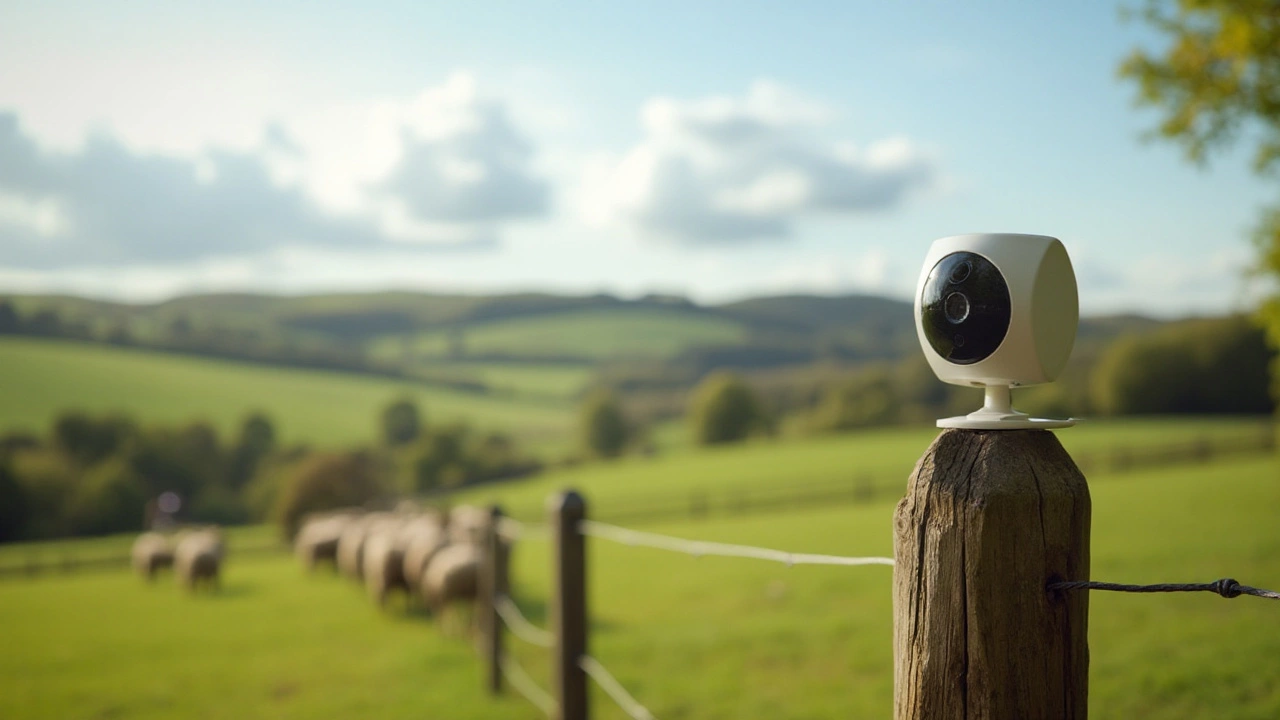
Pros and Cons of Wired vs Wireless
When diving into the world of home surveillance, the decision between installing a wired security camera or opting for a wireless security camera setup hinges upon multiple factors. Wired cameras are celebrated for their reliability. Connected directly through wires, they offer an uninterrupted connection, crucial for consistent and high-quality video. Since they are permanently plugged into a power source, there's no need to fret over battery changes, making them a favorite among those seeking long-term peace of mind.
On the flip side, the installation process for wired cameras can be daunting. It often requires professional assistance, especially if walls need drilling to hide those unsightly wires. There's also the lack of flexibility. Once installed, moving a wired camera isn't a task for the faint-hearted. These factors can drive some homeowners, especially renters, to lean towards the wireless option.
Wireless cameras offer the freedom that wired systems lack. Installation often comes as a breeze since there's no extensive wiring involved. This flexibility is appealing, particularly if household setups or security needs evolve.
"The ease of relocating and adjusting wireless cameras allows homeowners to adapt to changing security needs, a luxury many find invaluable," says Jane Doe from Home Tech Magazine.
However, relying on wireless connectivity also introduces a few hurdles. Wireless cameras often run on batteries, meaning regular monitoring and replacement. Additionally, they're susceptible to Wi-Fi disruptions—a consideration for those in areas with unstable internet connections. Storage also becomes a query, as many wireless systems sidestep the need for hardware by using cloud storage, which can incur ongoing costs.
To bring a clearer perspective, let’s consider some statistics. A report from recent years highlights that approximately 60% of consumers opt for wireless solutions due to ease of use, with only around 40% preferring the stability of wired counterparts. This trend reflects growing trust and reliance on superior wireless technology.
In weighing the pros and cons of both systems, one must ponder not just the installation ease or connectivity, but also future needs. For some, the fidelity and reliability of wired cameras are indispensable, while others find the adaptability and simplicity of wireless cameras far outweigh the pitfalls. The choice ultimately boils down to what aligns best with one’s individual circumstances.
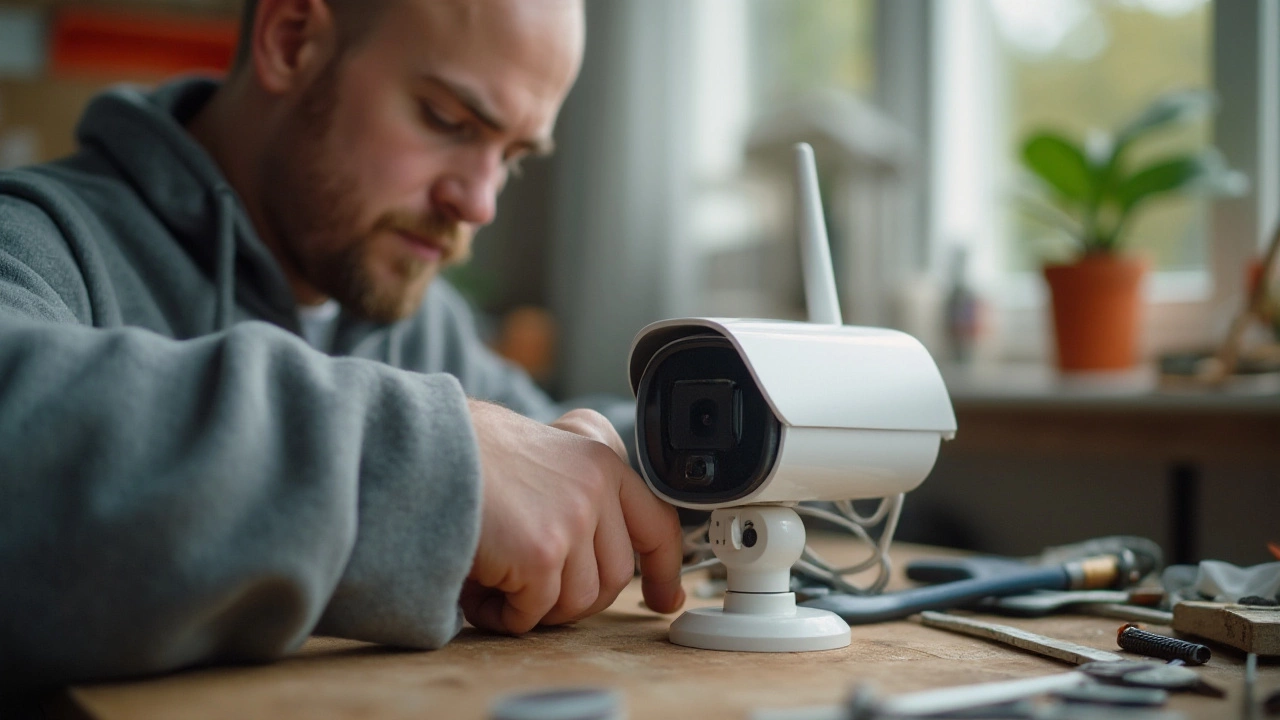
Making the Right Choice for Your Situation
When deciding between wired security cameras and their wireless counterparts, it’s essential to consider your specific circumstances and priorities. The first thing to reflect on is the nature of your property. If it’s a large, complex space, a wired system might provide the stable connection needed to cover every nook and cranny without fear of signal disruption. Wired cameras offer a reliable and consistent power supply, eliminating the need for frequent battery changes. On the contrary, if your home is a smaller apartment or you plan to move, the flexibility of wireless systems can be advantageous. They allow you to easily shift the placement of cameras without the hassle of rewiring, adapting to new configurations as your security needs evolve.
Another key factor is the installation process itself. Wired systems typically require professional installation or at least a strong DIY aptitude, as they involve running cables through walls and ceilings. This can be costly and time-consuming but results in a more permanent surveillance solution. Wireless security cameras, however, can often be mounted and configured with minimal effort, making them an attractive option for renters or those who might frequently redecorate or rearrange their space.
Security is, of course, the top priority, and each system's security protocol varies. Wired setups are generally perceived as more secure against hacking attempts, since they do not rely on potentially vulnerable internet connections. Wireless cameras must be secured with robust passwords and updated firmware to safeguard against cyber threats, an essential consideration if your home network is not tightly secured. A balanced approach might involve using wireless cameras with strong encryption and network security protocols.
According to John Smith, a home security expert from SecureTech, "The best choice often boils down to understanding the trade-offs between flexibility and reliability, cost and convenience. What's crucial is that the chosen system fits not just your home's layout, but your lifestyle and peace of mind."
Budget plays a pivotal role too. While wired cameras might seem more economically viable in the long term, the upfront costs can be significant due to equipment and professional installation fees. Wireless security cameras typically have a lower initial cost to set up but might incur more expenses over time, especially as you need to replace batteries or expand your account for additional cloud storage. Consider your budget in light of both current and predicted future expenses.
For those focused on smart home integration, wireless cameras usually offer superior compatibility with other home automation devices, allowing seamless control via mobile apps or smart assistants. However, this depends on the specific models and brands you choose, as some wired systems are also moving toward smoother integration.

